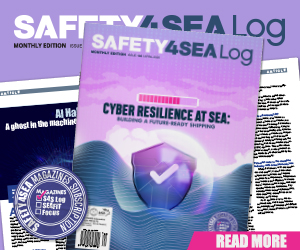As we strive for a more inclusive world, women role models have a major role to play in inspiring other women. Especially in industries such as maritime, where women are a minority, the media can assist greatly in telling the stories of women who made it in a male-dominated profession despite the challenges.
Gender roles: Societal dictators that kill dreams
According to the International Labor Organization (ILO), a major reason why women don’t join certain professions is the established gender roles. For instance, across the board, both women and men report that the biggest barrier for women in paid work is the struggle to balance it with family responsibilities. That is a main reason why female seafarers make up less than 2% of the workforce, as it is a profession that demands long periods spent away from home.
Looking at LinkedIn statistics from 163 countries, it is confirmed that professions that are considered traditionally female-dominated remain so. On the other hand, women are underrepresented in male-dominated roles. For instance, Healthcare and Care Services remain predominantly female at 64.7%, followed by Education at 54%, and Consumer Services at 51.8%. In contrast, sectors like Oil, Gas, Mining, and Infrastructure have very low female representation, below 23%.
Furthermore, according to research published by Science magazine, common stereotypes associate high-level intellectual ability (brilliance, genius, etc.) with men more than women. These stereotypes discourage women’s pursuit of many prestigious careers; that is, women are underrepresented in fields whose members cherish brilliance (such as physics and philosophy). Stereotypes are endorsed by, and influence the interests of, children as young as 6.
How the media reinforce gender stereotypes
As explained by UNICEF in its “Dismantling Gender Stereotypes in Media, Marketing and Advertising: Creating an Equitable Future in Asia-Pacific” brochure, narratives and representation in TV and films significantly shape self-perception, often reinforcing gender stereotypes.
Female characters are frequently depicted with less agency, while leadership roles are predominantly portrayed by males. In nonhuman characters, males are often overrepresented, contributing to the overall lower visibility of females. Stereotyped portrayals of household and work situations, along with unhealthy romantic storylines, further perpetuate harmful gender norms.
In advertising, women are less likely to be shown in public, in leadership, or making decisions about their futures. Ads for household goods and food often reinforce traditional gender roles, placing a disproportionate burden of care on women. Common media tropes include the “incompetent dad,” while women are typically shown cooking, cleaning, and caring rather than leading. Men, on the other hand, are more likely to be portrayed as scientists or tech leaders, reinforcing gender imbalances in these fields.
The same applies to digital media, as digital advertising frequently reinforces gender stereotypes.
Using media to change the narrative
When women are shown in a more accurate and diverse way in media, it helps to challenge harmful stereotypes and broadens the story of what women can accomplish, whether in leadership positions or male-dominated careers. Increased visibility boosts self-confidence and empowerment, particularly for younger individuals who find relatable role models.
Moreover, fair representation fosters a more welcoming culture, which can help change social norms to better support gender equality. It also motivates industries to tackle biases, making it easier for women to find better opportunities in their careers.
At the 2023 Maritime SheEO Conference, Rica Roy, Consultant Sports Editor at NDTV and Lead of Special Projects at Aspire for Her, sat down for an interview with Chris Hall, Managing Director and Lawyer at Shipowners Claims Bureau MCS.
During the discussion, Rica Roy highlighted how challenging it was for her to make it as a sports journalist in India. She explained the struggle as a female sports presenter in India.
Do you know your offside?” This is a question I still hear, even after so many years in the profession. I know my offside […] But, you know, when it comes to a woman, she’s often questioned whether she knows what she’s doing.
… she explained.
Rica Roy also expressed the thought that female role models are very important, saying that for her, being an early mover in this field presented the significant challenge of lacking role models and a clear sense of direction.
This changed when her horizons expanded through international experiences. By traveling abroad, she encountered women working at her level and others who were even more successful in the sports journalism industry, helping her to envision what was possible and chart a clearer path forward.
With the knowledge she gained from these experiences, breaking the glass ceiling became more attainable. As Rica Roy put it herself, “if she can see it, she can be it.”
Adopting initiatives in that direction
As demonstrated by Rica Roy’s journey, exposure to successful women can help expand horizons and foster a sense of direction, enabling emerging leaders to visualize their own potential. Through sharing their experiences and successes, these role models inspire others to overcome challenges, break barriers, and strive for excellence.
Businesses and organizations can adopt initiatives that promote gender roles and bring women’s stories to the surface. In such an instance, Lloyd’s Register Foundation, Heritage & Education Centre along with coalition of prominent maritime organizations is launching the “Rewriting Women into Maritime History” project, aimed at documenting the contributions of women in shipping over the past few centuries.
The project’s goals include raising awareness of women’s expertise and leadership in maritime history and reframing narratives about women in the industry to promote gender equality and inclusivity.
Where we stand
When these role models share their stories and successes, they can truly inspire other women to chase after careers that have often felt out of reach. The media plays a crucial role in bringing these stories to light, challenging the deep-rooted gender roles and stereotypes that hold back women’s involvement in different areas.
When the media showcases a variety of authentic portrayals of women in positions traditionally held by men, it can really push back against societal norms and inspire the next generation.
Creating an environment where visibility and support thrive not only empowers women to overcome obstacles but also brings a wealth of diverse viewpoints to industries.



























































